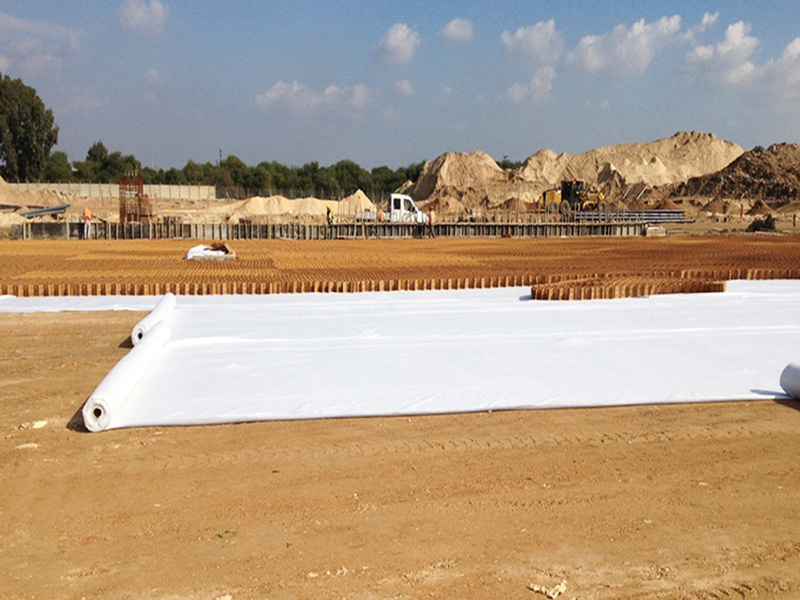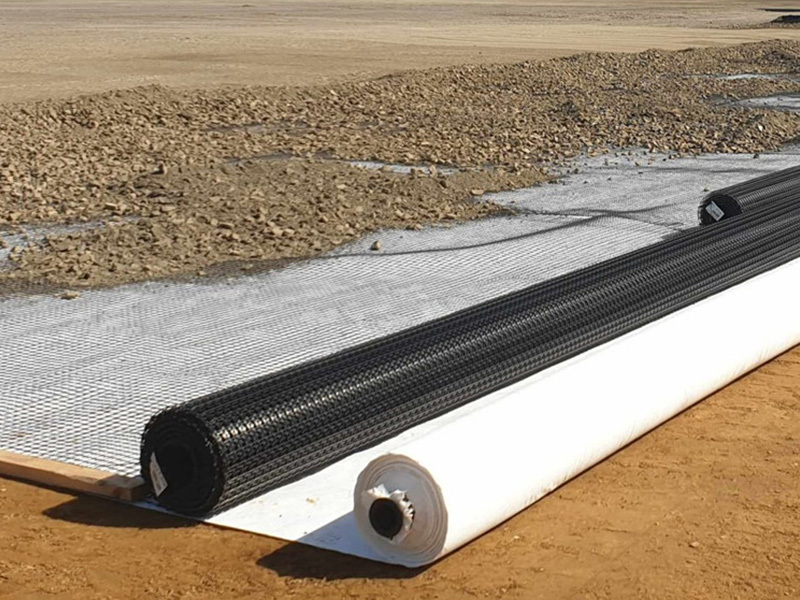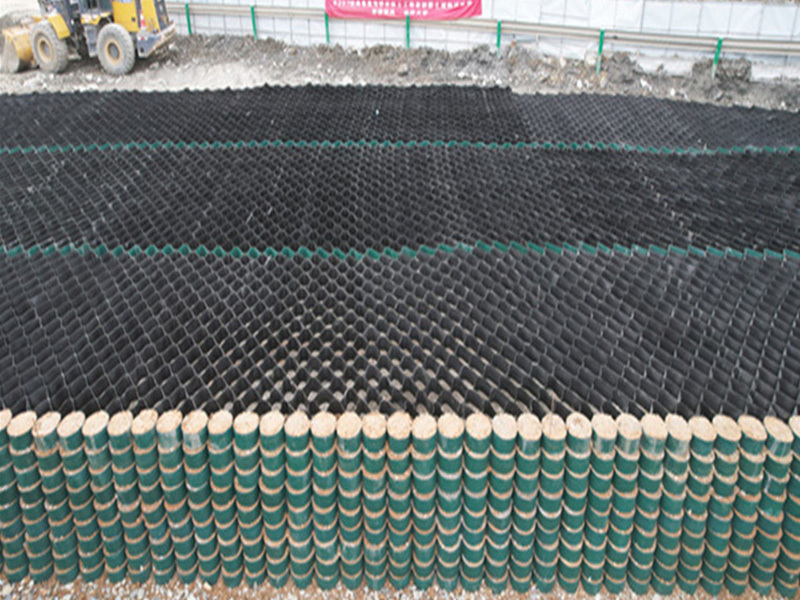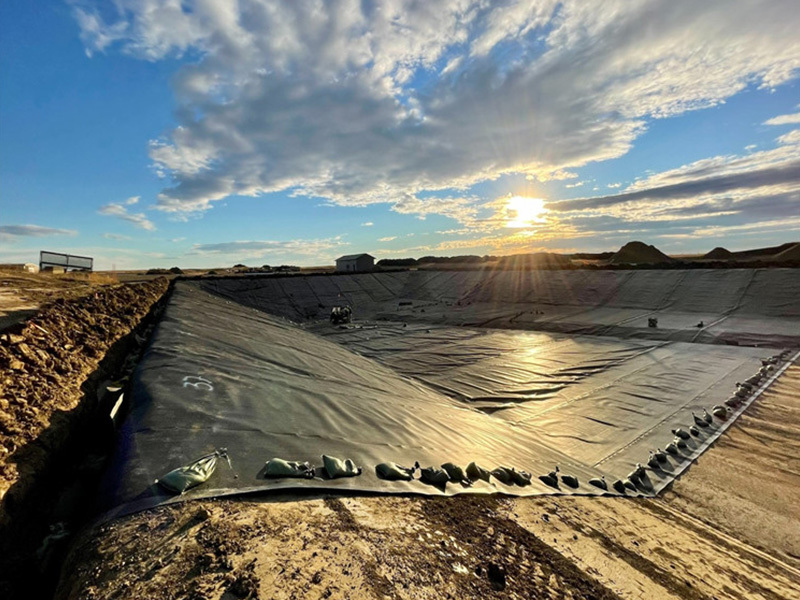Geotextile Applications in Highway Construction: Comprehensive Technical Guide
Release time:
Apr 19,2023
Geotextile Applications in Highway Construction: Comprehensive Technical Guide
1. Introduction
Geotextiles have become indispensable materials in modern highway engineering, offering multifunctional solutions for separation, filtration, drainage, and reinforcement. This technical guide details the systematic application of geotextiles in pavement systems, embankments, and drainage structures.
2. Material Specifications & Selection Criteria
2.1 Geotextile Types
Woven Geotextiles: High-tensile strength (20-100kN/m) for reinforcement
Non-woven Geotextiles: (100-500g/m²) for separation/filtration
Composite Geotextiles: Combined with geomembranes or drainage cores
2.2 Performance Parameters
Mechanical Properties:
Grab tensile strength: ≥800N (ASTM D4632)
Puncture resistance: ≥400N (ASTM D4833)
Trapezoidal tear strength: ≥250N (ASTM D4533)
Hydraulic Properties:
Permittivity: 0.01-2.0 sec⁻¹
Apparent opening size: 0.07-0.6mm (AOS O₉₀)
3. Key Functional Applications
3.1 Separation Layer in Pavement Systems
Installation Between:
Subgrade and aggregate base course
Old and new pavement layers
Performance Benefits:
Prevents intermixing of dissimilar materials
Reduces aggregate penetration into subgrade
Maintains design layer thickness
3.2 Embankment Reinforcement
Construction Techniques:
Basal reinforcement over soft soils
Wrap-around facing for steep slopes
Layered installation with geogrids
Design Considerations:
Required tensile strength calculation
Creep reduction factors
Interface friction coefficients
3.3 Drainage Systems
Edge Drain Applications:
Perforated pipe wrapping
French drain construction
Capillary Breaks:
Frost protection layers
Expansive soil treatment
4. Construction Methodology
4.1 Site Preparation
Subgrade Treatment:
Compaction to 95% Standard Proctor
Removal of sharp protrusions >10mm
Moisture content optimization
4.2 Geotextile Installation
Deployment Protocol:
Unrolling along traffic direction
Minimum 300mm side overlaps
600mm end overlaps
Anchoring Systems:
U-shaped pins at 1m spacing
Ballast placement (temporary)
Trench anchoring at edges
Seaming Techniques:
Sewn seams (Type SSa-1 per ASTM D4884)
Thermal bonding for nonwovens
Chemical adhesives for repairs
4.3 Overlay Construction
Aggregate Placement:
Dump-and-spread method prohibited
End-dumping with gradual forward movement
Minimum 150mm initial lift thickness
Compaction Control:
Vibratory rollers (initial pass <4km/h)
Progressive compaction sequencing
5. Quality Assurance Program
5.1 Material Certification
Factory Production Control:
Lot acceptance testing
Certification of compliance
On-site Verification:
Roll identification checking
Visual defect inspection
5.2 Field Testing
Seam Strength Testing:
1 test per 500m² (min. 80% parent material strength)
Placement Verification:
Overlap measurements
Wrinkle assessment (<25mm height)
6. Performance Monitoring
6.1 Structural Health Indicators
Rut Depth Measurement:
Laser profiling comparison
Cross-slope verification
Deflection Testing:
Falling Weight Deflectometer surveys
Backcalculation analysis
6.2 Hydraulic Performance
Drainage Capacity:
In-situ permeability tests
Flow rate monitoring
Clogging Potential:
Long-term permittivity testing
Gradient ratio analysis
7. Case Studies
7.1 Heavy Haul Road Construction
Project Data:
8km access road (Minnesota taconite mine)
600kN axle loads
Solution:
Woven geotextile (120kN/m)
40% reduction in base course thickness
7.2 Coastal Highway Rehabilitation
Challenge:
Tidal zone soft soil conditions
Implementation:
Composite geotextile-sand mattress
60% increase in embankment stability
8. Maintenance & Rehabilitation
8.1 Inspection Protocol
Annual Surveys:
Edge condition assessment
Sediment accumulation checks
Post-Event Inspections:
Flood damage evaluation
Heavy storm impact analysis
8.2 Repair Techniques
Patching Methods:
Heat-bonded overlays
Chemical fusion repairs
System Replacement:
Full-width panel installation
Edge transition detailing
9. Emerging Technologies
Smart Geotextiles:
Fiber optic strain sensing
Moisture detection fabrics
Sustainable Variants:
Recycled polyester products
Biodegradable temporary geotextiles
10. Conclusion
Geotextile applications in highway construction provide engineered solutions that significantly enhance pavement performance while reducing life-cycle costs. When properly specified and installed, geotextiles demonstrate:
Documented Benefits:
30-50% extension of service life
20-40% material cost savings
60% reduction in maintenance frequency
Improved sustainability through resource optimization
For optimal performance, engineers should consider site-specific conditions including:
Traffic loading spectra
Climatic factors
Subgrade soil characteristics
Construction methodology constraints
The integration of advanced monitoring technologies with geotextile systems is transforming highway asset management, enabling predictive maintenance strategies based on real-time performance data.
Next
News
Geocell Technology for Slope Protection: Mechanisms and Applications
Geocell Technology for Slope Protection
HDPE Geomembrane Waterproofing Construction for Reservoirs
Waterproofing Construction for Reservoirs








